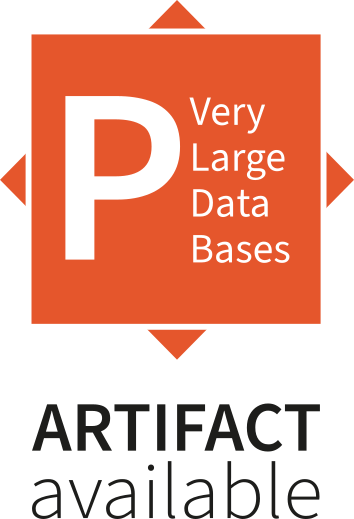go back
go back
Volume 16, No. 4
Motiflets - Simple and Accurate Detection of Motifs in Time Series
Abstract
A time series motif intuitively is a short time series that repeats itself approximately the same within a larger time series. Such motifs often represent concealed structures, such as heart beats in an ECG recording, the riff in a pop song, or sleep spindles in EEG sleep data. Motif discovery (MD) is the task of finding such motifs in a given input series. As there are varying definitions of what exactly a motif is, a number of different algorithms exist. As central parameters they all take the length 𝑙 of the motif and the maximal distance 𝑟 between the motif’s occurrences. In practice, however, especially suitable values for 𝑟 are very hard to determine upfront, and found motifs show a high variability even for very similar 𝑟 values. Accordingly, finding an interesting motif with these methods requires extensive trial-and-error. In this paper, we present a different approach to the MD problem. We define 𝑘-Motiflets as the set of exactly 𝑘 occurrences of a motif of length 𝑙, whose maximum pairwise distance is minimal. This turns the MD problem upside-down: The central parameter of our approach is not the distance threshold 𝑟 , but the desired number of occurrence 𝑘 of the motif, which we show is considerably more intuitive and easier to set. Based on this definition, we present exact and approximate algorithms for finding 𝑘-Motiflets and analyze their complexity. To further ease the use of our method, we describe statistical tools to automatically determine meaningful values for its input parameters. Thus, for the first time, extracting meaningful motif sets without any a-priori knowledge becomes feasible. By evaluation on several real-world data sets and comparison to four state-of-the-art MD algorithms, we show that our proposed algorithm is both quantitatively superior to its competitors, finding larger motif sets at higher similarity, and qualitatively better, leading to clearer and easier to interpret motifs without any need for manual tuning.
PVLDB is part of the VLDB Endowment Inc.
Privacy Policy